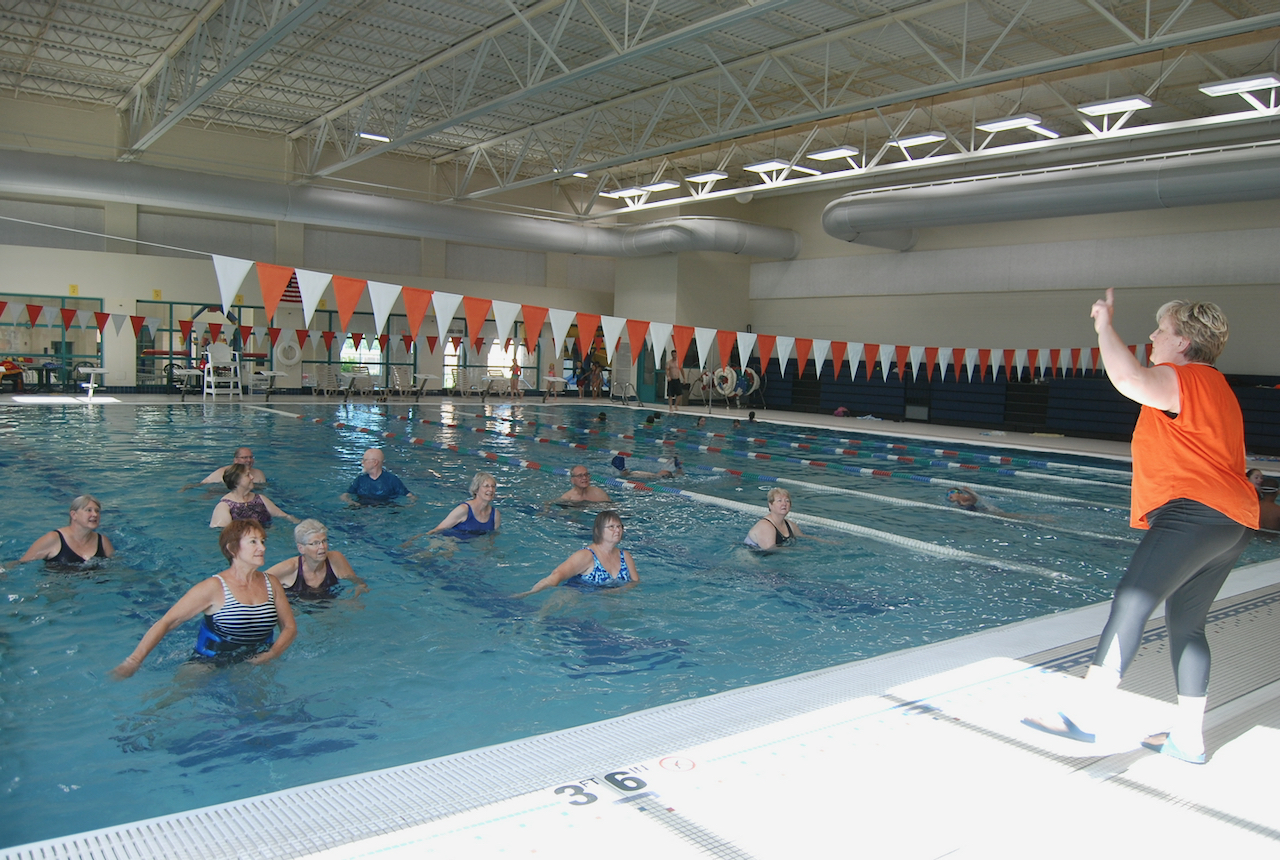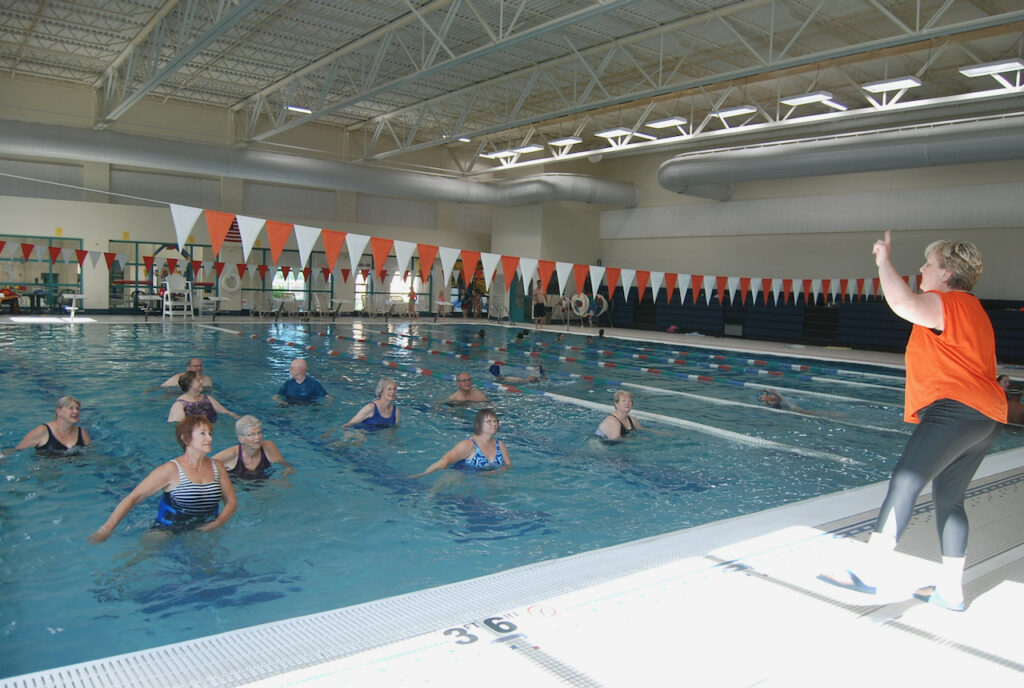What’s in the Aquatic Center lease and operation agreement?
- Home
- What’s in the Aquatic Center lease and operation agreement?

What’s in the Aquatic Center lease and operation agreement?
By Kim McDarison
Whitewater city officials released an announcement Friday signifying that they had entered into an agreement with the Whitewater Unified School District for the lease and operations of the Whitewater Aquatic and Fitness Center.
The 22-page document was signed on May 28.
According to the agreement, the last agreement for the operations and lease of the facility terminated in 2021.
The most recently signed agreement offers terms for the lease and operation of the recreational facility which is constructed on land adjacent to the Whitewater High School, and consists of an eight-lane, 25-yard competitive pool, a leisure pool, which includes a slide, and a fitness center.
Additionally, the facility has a locker room, which is separate from those used by the public, and is used exclusively by the school district, along with mechanicals that exclusively serve the district’s locker room space.
The facility, according to the lease agreement, was constructed using public funds appropriated by the district and the city, including a $2 million contribution made by the city, and a private donation “obtained by other sources.”
The document notes: “The aquatic facility is primarily intended to serve the recreational and programming needs of the general public.”
Additionally, the document states, “The parties (the district and the city) agree that the school district’s contribution shall be used to enable all school district residents to use the aquatic facility under the same use and fee structures that apply to city residents.”
According to the document, the parties also agree that the city will lease portions of the facility to the school district for curricular, special education and extracurricular purposes.
Aquatic Center Committee
The contract spells out the responsibilities of an Aquatic Center Committee of the City of Whitewater, referenced in the document as the ACC, which will make advisory recommendations regarding the facility to officials of both the district and the city. It will have staff support through the city’s Park and Recreation director and the Aquatic Center facility director.
The committee is a governmental subdivision and agency of the city. It will have five voting members, but, the document states, “it will not make substantive decisions regarding the operation of the aquatic facility.”
Members of the committee will include one appointee and one alternate appointee by each of the parties, the school district and the city.
Three citizen members will be jointly appointed by the parties.
Lease provisions
The city will lease the facility, with the exclusion of the locker room used exclusively by the district.
Under a heading of “lease provisions,” the document provides that the district will lease to the city the facility, with the city paying $1 on the “commencement date,” and on each anniversary of the commencement date thereafter, and the district agrees to pay the city $7,500 “no later than July 1 annually for the use of the aquatic facility for its earlier specified uses.
The district additionally grants the city and its “invitees” the use of the facility’s parking areas and associated walkways and driveways.
The school district will post signs informing the public which parking areas within the high school campus are available to the public for parking, with those signs labeling “Aquatic Center Designated Parking Area.”
Under its terms, the agreement is made for six years, commencing on May 28, 2024.
The agreement ends May 28, 2030, unless it is terminated earlier by either party in the event of “an uncured default.”
The parties may extend the agreement by mutual written agreement, the document notes.
Scheduling
Under a heading of scheduling, the document specifies that the city shall exercise its best efforts to schedule the use of the aquatic facility to meet within reason the school district’s programming needs and the general public’s recreational needs.
The document defines the school district’s “needs” as use of the lap pool during the school year and summer for health and physical eduction courses and related curricular activities and practice, individualized instruction for students with disabilities, training and competition for the school’s swim team. The document defines the general public’s “needs” as use of both pools and the fitness center for both youth and adults, including swimming lessons and related aquatics training and instruction, and parent-child recreational programs, as well as senior citizen health and recreational programs.
The contract acknowledges that in order to schedule fair use of the facility the parties must work together.
The contract sets dates by which the district and the city must present the one another with a “proposed schedule” for each year.
The district’s locker room
The district, according to the agreement, will be wholly responsible for the cost and expense associated with maintaining its locker room. The district is additionally responsible for the cost of utilities supplied to the locker room, such as seer, water and utilities used to heat water. Electricity and HVAC utilities provided to the district’s locker room will not be metered separately and will be paid by the city, however, the district will become responsible for those costs associated with any future improvements or expansions made to its locker room.
Staffing
According to the agreement, the city, with the exception of the district’s locker room, will be responsible for providing aquatic center staff. The responsibility includes hiring and firing, wages and benefits, workers compensation, unemployment compensation, and all other costs associated with all employees and volunteers required to operate the center.
Staffing needs will be determined by the city and reflected within an annual operating budget.
Operating budget
The document outlines the facility’s operating budget such that the city will contribute $258,767 towards the operations of the facility in the first year of the contract.
The school district will contribute $178,000 toward the cost of operations in the first year of the agreement.
For each of the parties, the contract states: “For each subsequent year for the term of this agreement, plus any extensions, the city (and school district) shall contribute an amount equal to the previous year’s contribution for operational costs plus an additional 3%.
The city shall be solely responsible for any operations budget deficits during the agreement term.”
Any operational surplus will be applied to the operational budget for the following year.
Capital budget
The document states that the parties, the district and the city, will each contribute $100,000 toward capital repairs and improvements for each of the first three years of the agreement.
After the first three annual capital contribution payments are made, each subsequent capital contribution payment shall be the amount made in the previous year plus 3%, respectively.
The city will be responsible for generating revenues sufficient to cover the facility’s obligations, which include all expenses associated with operating, maintaining, repairing, replacing, and staffing the leased premises, with the exception of some special activities and events.
The city will receive or be reimbursed for all revenues generated from the use of the facility, with the exception of curriculum and meet fees, sale of school district apparel, and swimming lessons provided by the district.
The city will establish user fees for the facility. Monies earned through user fees will be placed in operating accounts administered and controlled by the city for use in connection with operating and staffing the facility, as well as maintenance, repair and replacement of equipment and other facility assets.
The city will engage in fundraising activities as a means by which to generate funds. Monies placed in the city’s capital account may not be transferred into an account for operational use.
“Capital account funds shall be expended exclusively on capital maintenance projects reflected in the Capital Maintenance Plan for a given budget year,” the document reads, adding that “capital account funds shall not be intermingled with operational account funds and the parties shall review each year’s capital maintenance budget and make reasonable efforts to resolve any disputes or inconsistencies …”
The full agreement is here: http://whitewaterwise.com/wp-content/uploads/2024/06/WAFC-Signed-Agreement-June-2024.pdf.
In a statement released earlier this week, Whitewater City Manager John Weidl said that the new agreement “highlights the city’s commitment to ensuring the aquatic facility continues to serve the community’s recreational needs efficiently and effectively.”
He said the city was “stepping up to ensure the future of the facility in the following ways:
Financial contributions
• Operational Costs: According to Weidl, the city is shouldering a larger portion of the operational costs. In the first year, the city contributes $258,767, while the school district’s contribution is $178,000. This disparity grows each year with a 3% annual increase for both parties.
• Deficit Responsibility: The city is solely responsible for any operational budget deficits, ensuring the facility’s financial stability without additional burden on the school district.
• Capital Improvements: Both parties contribute equally to capital repairs and improvements in the initial three years. However, this commitment is noteworthy given the city’s additional financial responsibilities, Weidl noted.
Fundraising Efforts
• Sole Responsibility: The city, Weidl stated, is solely responsible for any fundraising efforts necessary to support the aquatic facility, despite the facility and its fixtures being owned by the school district. This adds another layer of responsibility on the city, ensuring that the facility remains financially sustainable through private donations and other funding sources.
Operational Control and Staffing
Exclusive Control: The city has exclusive control over the scheduling, allocation, and leasing of space within the facility, ensuring it meets the needs of both the school district and the general public. This task requires substantial administrative effort and coordination, according to Weidl.
• Staffing Responsibilities: The city, Weidl noted, is responsible for staffing the aquatic facility, including hiring, wages, benefits, and compliance with relevant employment laws. The school district only manages staffing for its specific scheduled programs, which is a much narrower scope.
Infrastructure and Maintenance
• Locker Room Facility: While the school district maintains exclusive control and responsibility for the district locker room facility, Weidl stated that the city’s responsibilities extend to the broader facility, ensuring, he said, that it remains a clean, safe, and operational public space.
Scheduling and Program Management
• Annual Schedules: The City must accommodate the school district’s program needs while balancing the general public’s recreational requirements, Weidl continued. This involves creating and adhering to comprehensive annual schedules and resolving any conflicts.
• Summer Programs: If the school district decides to offer summer aquatics instruction, the city must integrate this into the overall schedule, potentially providing facility personnel to assist, Weidl stated.
He concluded that the city of Whitewater’s increased responsibilities under the new Lease and Operation Agreement demonstrate its dedication to community recreation.
“By taking on a larger share of financial and operational duties, including fundraising efforts, the city ensures the aquatic facility remains a vital resource for all residents. This new framework also aims to reduce political friction and reliance on informal communication networks, ensuring a more transparent and efficient operation. The city’s commitment goes above and beyond the equal cost-sharing arrangement of the previous agreement, reflecting a proactive approach to enhancing community amenities and ensuring the facility is managed appropriately and sustainably,” Weidl noted.

Community members enjoy a workout in the Whitewater Aquatic and Fitness Center pool, file photo/Kim McDarison.
This post has already been read 2462 times!
Kim
Our Advertisers
Most Read Posts
- No results available